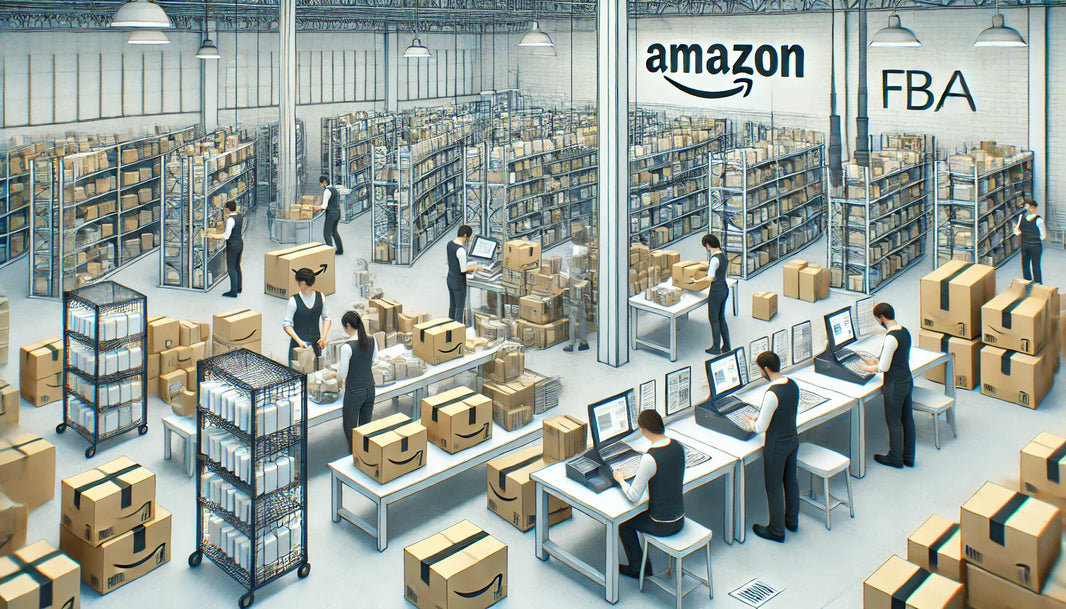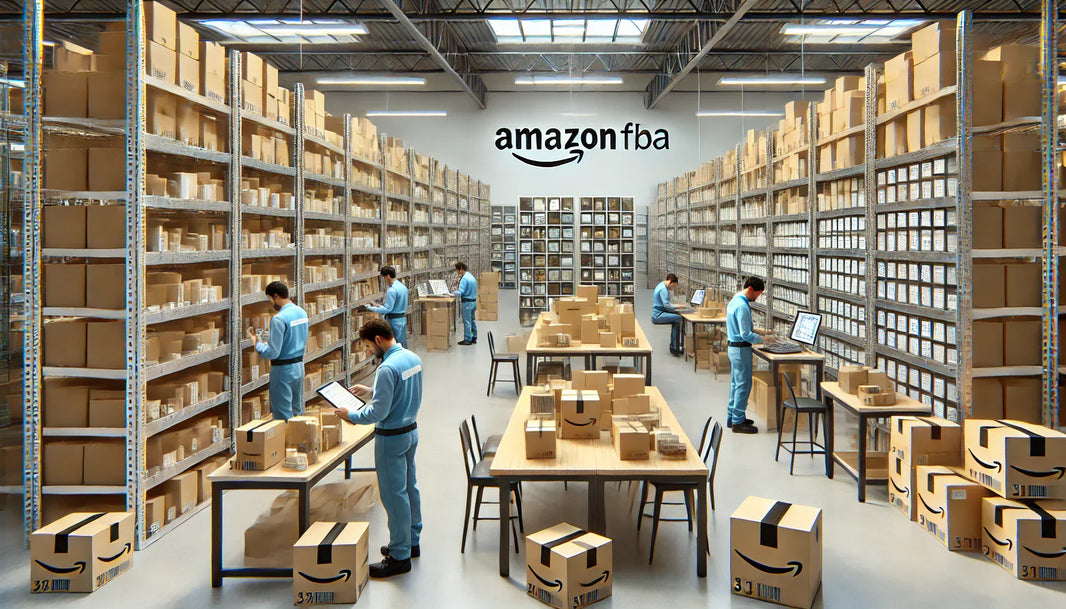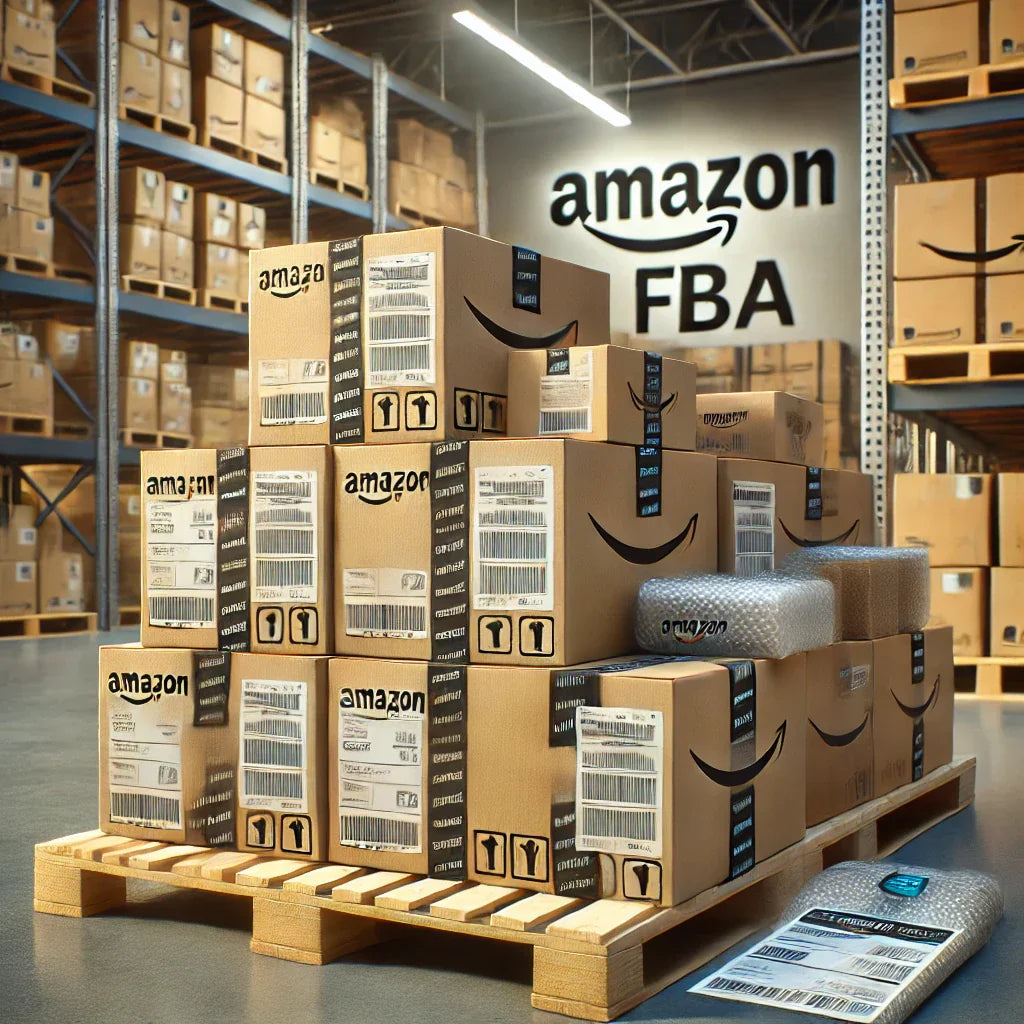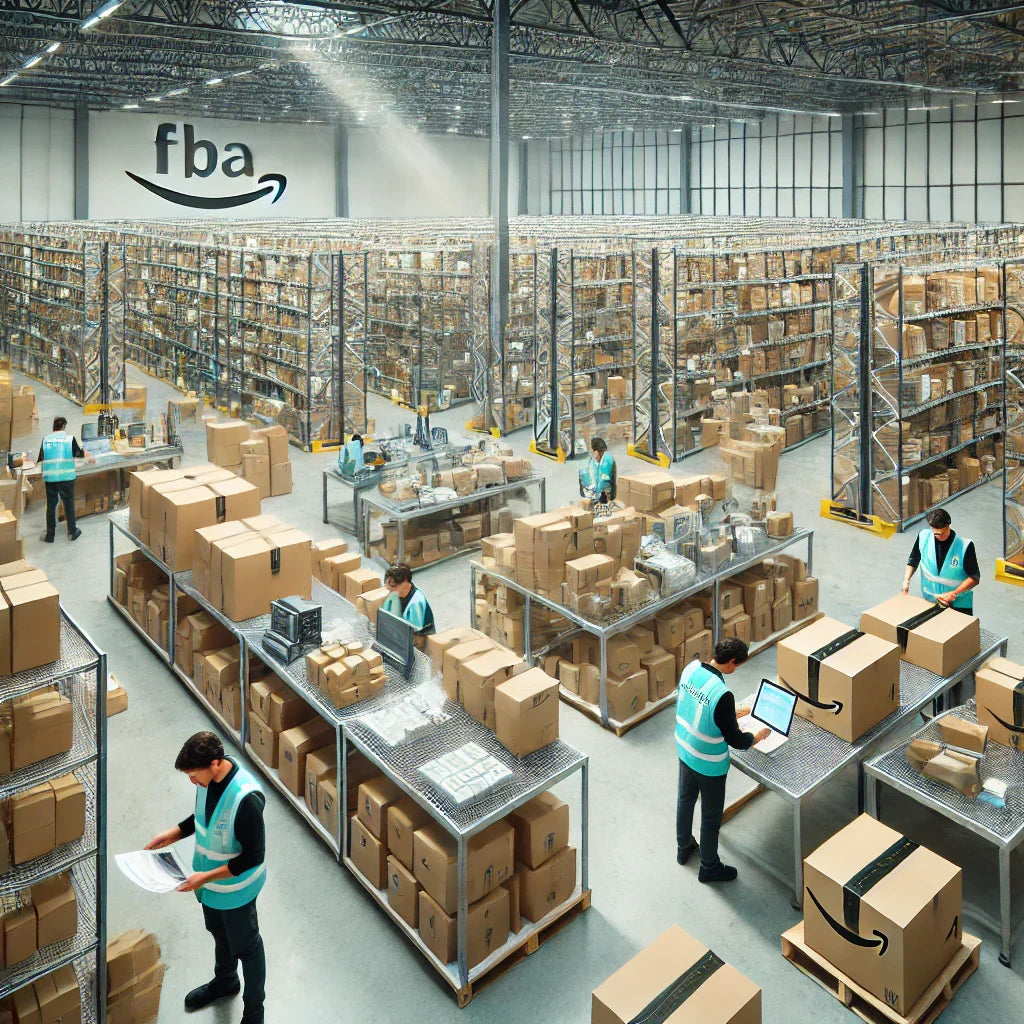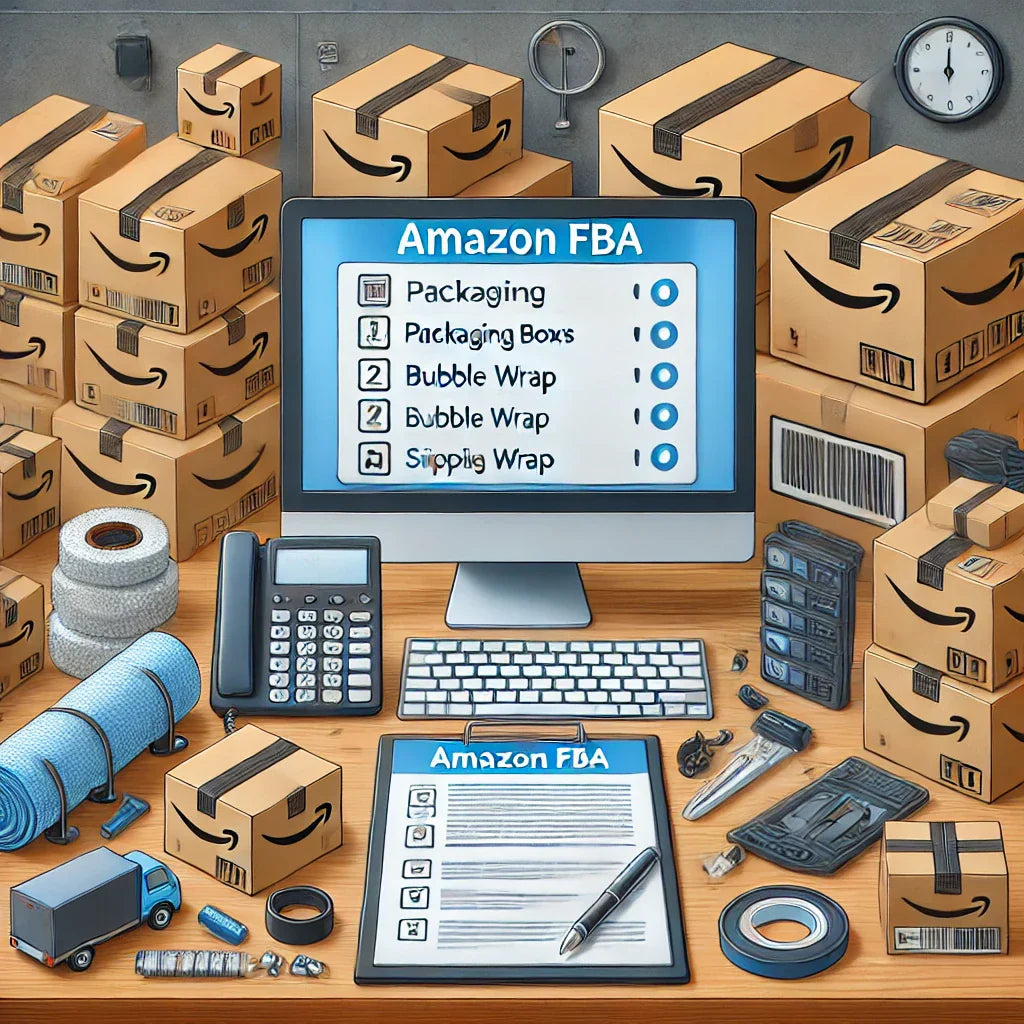In 2024, the warehouse industry stands at the forefront of technological innovation and strategic transformation, reshaping how businesses manage inventory, fulfill orders, and optimize supply chains. As e-commerce and consumer demands continue to evolve, advancements in automation, sustainable practices, and data analytics are set to redefine efficiency and scalability in warehousing. This article explores the top warehouse trends driving the industry forward, equipping businesses with insights to stay competitive and responsive to an increasingly dynamic market landscape.

The Role of Automation in Warehousing
Automation is increasingly pivotal in the warehouse sector, offering a pathway to reduce labor costs, boost operational efficiency, and minimize errors. The rise of automated guided vehicles (AGVs), robots, and even drones has transformed day-to-day operations in ways previously unimaginable.
1. Automated Guided Vehicles (AGVs) and Autonomous Mobile Robots (AMRs)
AGVs and AMRs are transforming warehousing by automating tasks like moving inventory, replenishing stock, and handling order picking. AGVs, for example, can move along fixed paths and manage repetitive tasks, reducing strain on the workforce. Meanwhile, AMRs offer flexibility, allowing them to navigate dynamically within the warehouse.
The impact is clear: these solutions enable a higher throughput while reducing the physical demand on workers, making the warehouse a safer and more efficient space. For 2024, AGVs and AMRs are predicted to play an even larger role as their technology continues to improve and become more affordable for businesses.
2. Robotics in Picking and Packing
Warehouse automation now extends to order picking and packing processes. Robotic arms and conveyor systems can pick and place items with remarkable speed and accuracy, drastically reducing order fulfillment times. Companies have started implementing AI-enabled robotic arms that can analyze and handle various SKUs, thereby improving productivity.
The integration of these advanced robots not only speeds up operations but also reduces the error rate, which is crucial in today’s fast-paced, high-demand e-commerce environment. With fewer mistakes, businesses can avoid costly returns and improve customer satisfaction.
Enhanced Data Analytics for Strategic Decision-Making
With massive amounts of data being generated daily, the ability to analyze and utilize this information effectively has become essential for competitive success in warehousing.
1. Predictive Analytics for Demand Forecasting
One of the primary uses of data analytics in warehouses is demand forecasting. Predictive analytics allows businesses to estimate future demand trends by analyzing historical data, seasonal trends, and even social media sentiment. This approach ensures that companies maintain optimal stock levels, reducing waste and storage costs.
Demand forecasting also improves customer satisfaction by enabling faster delivery times and reducing stockouts. For instance, companies using predictive analytics can adjust inventory levels in response to predicted surges in demand, particularly during peak seasons or major promotional events.
2. Real-Time Inventory Tracking and Optimization
Real-time inventory tracking is another innovation reshaping warehouse management. RFID tags, IoT sensors, and machine learning algorithms provide visibility into every item’s location and status within the warehouse. This visibility helps streamline operations, minimizing the time spent locating or misplacing stock.
Additionally, real-time inventory data enables warehouses to optimize storage allocation dynamically, saving space and reducing operational inefficiencies. This kind of operational insight is instrumental for handling increased product variety without overhauling warehouse infrastructure.
Sustainability: Green Practices in Modern Warehousing
Environmental sustainability has become a critical consideration in every industry, and warehousing is no exception. As consumers become more environmentally conscious, businesses are under pressure to adopt eco-friendly practices.
1. Energy-Efficient Lighting and Equipment
One of the easiest ways to reduce energy consumption in warehouses is by upgrading lighting systems to LED lights, which use significantly less energy than traditional lighting. In addition, automation equipment powered by renewable energy sources, like solar panels, has been adopted by several forward-thinking warehouses.
This shift toward energy-efficient equipment reduces a warehouse’s carbon footprint, aligns with corporate social responsibility goals, and provides financial savings on energy bills. Many companies also utilize energy management systems to monitor and adjust energy use, ensuring that only necessary systems are operational during off-peak hours.
2. Eco-Friendly Packaging and Waste Management
Waste from packaging materials represents a major environmental concern for warehouses. Moving towards recyclable and biodegradable packaging is one of the most impactful steps warehouses can take. Some companies also implement waste management protocols, which involve reusing materials and reducing unnecessary packaging.
Further, waste tracking tools allow warehouses to monitor and minimize their overall waste output. Warehouses that take these steps not only contribute to environmental sustainability but also meet the rising consumer preference for eco-friendly brands.
Workforce Empowerment Through Technology
While automation is transforming warehousing, human labor remains a vital component. Technology now enables warehouse employees to work more efficiently, reducing manual effort while increasing productivity.
1. Augmented Reality (AR) for Order Picking
Augmented reality (AR) is an emerging tool that enhances the efficiency of warehouse staff by displaying real-time picking instructions through wearable devices. This tech helps workers locate items faster by guiding them directly to the product location.
Warehouses using AR report reduced training times for new hires and increased picking accuracy. With AR, employees can work faster and with fewer errors, driving better overall efficiency and customer satisfaction.
2. Employee Training and Safety Monitoring
Training warehouse staff to use advanced technologies, like AR and robotics, is crucial for effective integration. Many warehouses now use virtual reality (VR) training simulations to provide hands-on experience in a safe environment. These immersive experiences prepare employees for the demands of a modern warehouse without exposing them to potential hazards during initial training.
In addition, wearable devices like smartwatches can monitor employees' physical well-being, alerting them if they exceed safe physical exertion levels. This use of technology not only enhances safety but also ensures compliance with workplace health standards.
Flexible Warehouse Models and Micro-Fulfillment Centers
To meet the demands of rapid e-commerce growth, many businesses are exploring flexible warehouse models and micro-fulfillment centers. These approaches improve last-mile delivery efficiency and allow companies to operate closer to their customers.
1. Micro-Fulfillment Centers for Faster Delivery
Micro-fulfillment centers are small, automated warehouses located near urban areas. By positioning inventory closer to customers, these centers reduce last-mile delivery times and help businesses offer same-day or next-day delivery. This setup is particularly beneficial for perishable items, such as groceries, where speed is critical.
These micro-fulfillment centers are typically equipped with automated systems that can handle high volumes of orders, allowing for rapid fulfillment and improved customer satisfaction. In 2024, the trend toward micro-fulfillment is expected to grow, especially among retailers looking to provide a competitive edge in delivery speed.
2. Flexible Warehousing and On-Demand Storage
Flexible warehousing enables businesses to scale storage space up or down depending on demand. This model is especially advantageous for companies with seasonal inventory fluctuations. For instance, retailers can rent additional warehouse space during peak seasons and reduce space as demand declines, avoiding unnecessary overhead costs.
Moreover, on-demand warehousing services provide businesses with a network of storage options that can be quickly accessed, enabling companies to adjust their storage needs in real-time. This model reduces capital expenditures and optimizes resource utilization across the supply chain.

Artificial Intelligence (AI) and Machine Learning (ML) for Smarter Operations
AI and ML are instrumental in making warehouses smarter and more adaptable to complex logistical demands. From optimizing routes for AGVs to predicting equipment maintenance needs, AI and ML have numerous applications in the warehouse sector.
1. AI for Route Optimization and Task Allocation
AI algorithms can analyze various data points, such as real-time traffic within the warehouse and picking demands, to create optimized routes for AGVs and workers. This level of precision reduces bottlenecks and improves the flow of goods throughout the warehouse.
Additionally, AI-driven task allocation ensures that employees are assigned tasks based on their strengths and experience levels, maximizing productivity and efficiency. By reducing unnecessary movement, these algorithms enable warehouses to operate with fewer errors and delays.
2. Predictive Maintenance for Equipment
Maintenance is critical for any warehouse, and predictive maintenance technology helps minimize equipment downtime. ML algorithms can analyze sensor data from equipment to predict when machines are likely to fail. This proactive approach prevents costly interruptions and extends the lifespan of warehouse equipment.
With predictive maintenance, warehouses avoid unexpected downtimes, reduce repair costs, and improve operational efficiency, enabling a smoother workflow and timely order fulfillment.
Integrating the Internet of Things (IoT) for Real-Time Monitoring
The Internet of Things (IoT) connects devices and systems, enabling real-time monitoring and insights across the warehouse ecosystem. This integration fosters data-driven decision-making, leading to optimized operations.
1. IoT-Enabled Inventory and Asset Tracking
IoT-enabled tracking solutions allow businesses to monitor the status of assets and inventory items continuously. RFID tags, sensors, and GPS devices collect data on asset location, condition, and movement. This real-time visibility is invaluable for managing high-volume inventory warehouses with diverse SKUs.
IoT-enabled tracking also supports the automation of inventory audits, reducing the labor and time required for traditional audits. With this technology, warehouses gain a holistic view of their operations, enhancing control over inventory and reducing stock discrepancies.
2. Environmental Monitoring for Temperature-Sensitive Goods
IoT sensors monitor environmental conditions within the warehouse, such as temperature and humidity, which is crucial for temperature-sensitive products like pharmaceuticals and food items. These sensors ensure that optimal conditions are maintained, reducing the risk of spoilage or damage.
In addition, alerts can be sent if conditions deviate from the required range, enabling quick corrective action. This application of IoT is essential for warehouses handling sensitive goods, ensuring product quality and customer satisfaction.
The Evolution of Warehouse Management Systems (WMS)
Modern warehouse management systems (WMS) have evolved to become comprehensive digital hubs for warehouse operations, integrating multiple processes into a single platform. This shift is crucial as warehouses juggle complex workflows, including inventory management, order processing, and labor allocation.
1. Cloud-Based WMS Solutions
Cloud-based WMS solutions are becoming the preferred choice due to their scalability, flexibility, and reduced need for on-premises hardware. Unlike traditional WMS software, cloud-based systems can be accessed from anywhere, allowing real-time collaboration and visibility across distributed teams.
Cloud WMS systems also provide a high level of data security, with backups and updates managed by the provider, which frees up internal IT resources. In addition, these systems offer integration with other cloud-based software, like ERP (Enterprise Resource Planning) and CRM (Customer Relationship Management) systems, streamlining cross-functional operations.
2. AI-Enhanced WMS for Smarter Decision-Making
AI-enhanced WMS solutions bring predictive analytics into inventory management, helping warehouses maintain optimal stock levels and avoid costly stockouts or overstocks. By analyzing historical demand patterns and real-time data, AI-driven WMS can make highly accurate predictions, enabling warehouses to respond proactively to fluctuations in demand.
In 2024, AI-empowered WMS software is expected to gain widespread adoption, especially among e-commerce giants managing vast inventories. By automating routine decision-making processes, AI-driven WMS helps warehouses run smoothly while allowing staff to focus on high-priority tasks.
Blockchain for Improved Transparency and Security
Blockchain technology, often associated with finance, has notable applications in warehousing, primarily in enhancing security, transparency, and traceability across the supply chain. The secure, decentralized nature of blockchain helps ensure that data is protected against tampering.
1. Real-Time Tracking and Traceability
Blockchain enables transparent and secure tracking of goods from production to delivery. By linking each transaction to a unique, unchangeable ledger, blockchain provides an audit trail for products, which is particularly valuable for industries with strict compliance standards, such as pharmaceuticals and food.
Using blockchain, warehouses and logistics providers can verify the origin, quality, and condition of products. In addition, consumers increasingly value transparency, and blockchain provides a means for companies to meet these expectations by offering product tracking capabilities to end customers.
2. Enhancing Security in Data Sharing
Warehouses deal with sensitive data on inventory, suppliers, and clients, making data security a top priority. Blockchain technology adds a layer of security to this data, ensuring that only authorized parties have access to specific information. Additionally, blockchain helps prevent data breaches by decentralizing information storage, making it nearly impossible for hackers to alter records.
In 2024, more warehouses are expected to adopt blockchain as data security demands increase. Blockchain technology also fosters trust among supply chain partners, as it guarantees data integrity across every transaction.
Collaborative Robots (Cobots) in Modern Warehousing
Collaborative robots, or cobots, are designed to work alongside human employees rather than replace them. Cobots are particularly useful in warehousing as they handle repetitive tasks, freeing up human workers for more complex activities.
1. Cobots for Order Picking and Sorting
Cobots are capable of navigating alongside human workers in busy warehouse environments, picking and sorting items efficiently. Unlike traditional robots that operate in isolated environments, cobots use advanced sensors and AI to move safely and accurately around employees.
The advantage of cobots is that they require minimal training to operate and can be deployed in warehouses of all sizes. In 2024, we expect cobots to become increasingly common as companies recognize their potential to improve productivity and employee safety without replacing human roles.
2. Cobots in Quality Control
Another application of cobots in warehousing is in quality control. Cobots equipped with vision systems can inspect products for defects, ensuring that only quality goods are shipped to customers. Quality control cobots are particularly beneficial in industries with stringent quality standards, such as electronics or automotive parts.
By automating the inspection process, warehouses can reduce the risk of returns due to defective products, improving customer satisfaction and reducing operational costs. This trend aligns with the broader industry shift toward quality-driven processes to maintain a competitive edge.
The Importance of Digital Twins in Warehouse Management
Digital twins are virtual replicas of physical warehouses that provide real-time insights into warehouse operations. Using data collected from sensors, IoT devices, and WMS, digital twins simulate the warehouse environment, allowing managers to test scenarios and optimize processes without disrupting daily operations.
1. Simulation for Process Optimization
Digital twins allow warehouse managers to run simulations for various scenarios, such as layout changes, equipment additions, or shifts in inventory levels. These simulations help determine the best strategies for optimizing space, labor, and equipment usage without the risks associated with physical changes.
For example, a warehouse can simulate different layouts to find the configuration that minimizes travel time for employees and AGVs, thus improving overall efficiency. As digital twin technology advances, it is expected to become more accessible, allowing even mid-sized warehouses to leverage its benefits.
2. Enhanced Predictive Maintenance
Digital twins offer a detailed view of the condition of warehouse equipment, which is invaluable for predictive maintenance. By monitoring real-time data from machines, digital twins can predict when maintenance is required, reducing downtime and extending equipment life. This proactive approach to maintenance is critical in warehouses with extensive automated systems, where equipment failure could disrupt operations.
In 2024, digital twins are set to become a mainstay in warehousing, particularly in highly automated facilities where predictive maintenance can significantly reduce costs and improve efficiency.

Customer-Centric Warehouse Solutions
The rise of customer-centric business models has led warehouses to adopt new practices and technologies that prioritize customer satisfaction. Today’s consumers expect fast, accurate delivery, real-time order tracking, and exceptional service, which impacts every part of the supply chain, including warehousing.
1. Same-Day and Next-Day Delivery Optimization
Warehouses play a critical role in meeting consumer expectations for quick delivery. Companies are investing in localized warehouses and micro-fulfillment centers near major customer hubs, reducing the distance goods must travel.
Same-day and next-day delivery have become industry standards, especially for e-commerce. By investing in automation and efficient fulfillment strategies, warehouses are better equipped to handle high volumes of orders quickly and accurately. This trend reflects a shift toward highly responsive warehousing, as businesses aim to exceed customer expectations in speed and service.
2. Real-Time Customer Order Tracking
Real-time order tracking has become a standard feature in e-commerce, providing customers with updates on their order status from the moment it is placed until delivery. For warehouses, this means implementing systems that integrate with carriers and e-commerce platforms, providing seamless visibility into the order fulfillment process.
Enhanced order tracking systems not only improve customer satisfaction but also reduce the number of customer service inquiries. Customers can see where their order is at any time, giving them confidence in the delivery process and reducing the need for follow-up questions.
Customization and Personalization in Warehousing
Customization is a growing trend in warehousing as companies look to personalize the customer experience. With advancements in technology, warehouses can now offer personalized packaging, product bundling, and even custom-made products, all managed directly within the facility.
1. Personalized Packaging and Kitting
Personalized packaging has become popular among companies that want to stand out in a crowded market. Warehouses are now offering kitting services where items are bundled according to customer preferences or specific orders, creating a unique unboxing experience.
For example, a cosmetics company may offer custom gift sets assembled in the warehouse based on customer selections. This trend reflects a shift toward customer-centric warehousing, with warehouses actively contributing to the end-user experience.
2. Additive Manufacturing and On-Demand Production
Warehouses are increasingly adopting additive manufacturing (3D printing) to offer on-demand production of custom items. This approach reduces lead times for personalized products and allows companies to manufacture small quantities cost-effectively.
For instance, a warehouse can produce custom parts or replacement components on demand, providing a value-added service to customers. In 2024, additive manufacturing is expected to gain traction, especially in industries that rely on customized or rare components, such as automotive and aerospace.
Resilience and Risk Management in Warehousing
In response to global disruptions, resilience and risk management have become top priorities for warehouses. By investing in resilient systems, businesses can better manage disruptions and ensure a steady flow of goods.
1. Diversified Sourcing and Inventory Strategies
Warehouses are diversifying their inventory sources and storage strategies to prevent supply chain disruptions. Instead of relying on a single supplier, companies are establishing relationships with multiple vendors, ensuring that they have alternatives if one supply line is disrupted.
In addition, warehouses are increasing safety stock levels to prepare for potential shortages, a trend that has gained traction since the COVID-19 pandemic exposed vulnerabilities in global supply chains. By implementing these strategies, warehouses can maintain steady operations even during unexpected events.
2. Risk Assessment and Contingency Planning
Risk assessment tools help warehouses identify potential risks, such as equipment failure, supply chain delays, or natural disasters. With contingency plans in place, warehouses are better prepared to respond to crises quickly and effectively, minimizing downtime and ensuring that customer orders are fulfilled on time.
In 2024, more warehouses are expected to adopt risk management software and proactive contingency planning as essential parts of their operational strategy. These tools provide a framework for resilience, helping warehouses handle challenges without sacrificing customer service.
Sustainable Warehousing Beyond Basics
Sustainability in warehousing has progressed beyond the implementation of energy-efficient lighting and basic recycling programs. As warehouses increasingly become significant components of global supply chains, there’s a stronger focus on comprehensive, sustainable operations that not only reduce environmental impact but also align with corporate responsibility standards and consumer expectations.
1. Carbon-Neutral Warehouses
Aiming for carbon neutrality, some warehouses are integrating renewable energy sources, such as solar panels, to power operations. These facilities often implement energy management systems to optimize energy use, from lighting to heating, cooling, and automated equipment, significantly reducing their carbon footprint.
Further, companies are investing in carbon offset programs that counterbalance emissions from warehouse operations. As consumers and regulatory bodies push for sustainable practices, more warehouses in 2024 are expected to adopt these standards, often with the assistance of environmental consulting firms that specialize in reducing industrial carbon emissions.
2. Sustainable Material Handling and Recycling Programs
Beyond energy savings, sustainable material handling practices are gaining traction, from using recycled pallets to opting for biodegradable shrink wraps and other packaging alternatives. In addition, implementing a robust recycling program can help reduce landfill waste by recycling everything from cardboard to pallets and electronics.
Some warehouses have begun rethinking their waste management systems entirely, aiming to achieve a “zero waste” goal. This approach reduces costs associated with waste disposal and also supports environmentally responsible warehousing. By optimizing waste management, companies not only lower their environmental impact but also often realize cost savings.
Enhanced Cybersecurity for Warehouse Management Systems
As warehouses adopt more advanced digital solutions, such as cloud-based warehouse management systems (WMS) and IoT devices, cybersecurity has become a crucial focus area. Protecting sensitive data, including supplier information, inventory levels, and customer order details, is essential for warehouse operations, especially as cyber threats continue to evolve.
1. Advanced Encryption and Multi-Factor Authentication
With warehouses increasingly using cloud-based solutions, data security protocols such as encryption and multi-factor authentication (MFA) have become fundamental. Encryption protects data at rest and in transit, while MFA reduces the risk of unauthorized access by requiring additional authentication steps beyond passwords.
In 2024, these cybersecurity measures are considered standard, with many warehouses investing in more sophisticated security solutions, such as end-to-end encryption and biometric access controls, particularly for sensitive data and restricted areas.
2. Continuous Security Monitoring and Threat Detection
Cyber threats are constantly evolving, and proactive monitoring is critical. Advanced cybersecurity solutions now provide continuous monitoring and threat detection, allowing warehouses to identify and respond to potential threats before they escalate. Many companies are using AI-driven systems that analyze data traffic and detect anomalies, providing alerts to security teams in real-time.
This capability is particularly relevant for large warehouses managing extensive networks of connected devices and systems. As a result, cybersecurity strategies that involve AI and machine learning tools are expected to become more widespread, reducing the potential for breaches and safeguarding operational continuity.
Climate-Controlled Warehousing for Sensitive Goods
The demand for climate-controlled warehousing is on the rise as more industries require precise environmental conditions for products like pharmaceuticals, electronics, and perishables. Maintaining stable temperature, humidity, and other factors is essential to preserve the integrity of these items, making specialized storage facilities indispensable.
1. High-Tech Climate Control Systems
Warehouses are now investing in advanced climate control systems that monitor and maintain specific environmental conditions. These systems use IoT sensors to track temperature, humidity, and air quality, and they adjust automatically to maintain the required parameters. Such systems also integrate with warehouse management software to provide a comprehensive view of storage conditions.
For example, pharmaceutical companies rely on these controlled environments to store vaccines and biologics that require stringent temperature ranges. Climate control technology helps prevent spoilage, ensuring product quality and compliance with regulatory standards.
2. Real-Time Condition Monitoring and Alerts
For goods requiring specific storage conditions, real-time monitoring is essential. Advanced climate-controlled warehouses now provide alerts if conditions deviate from optimal settings, enabling quick action to prevent product loss or spoilage. This is especially important for high-value items or temperature-sensitive goods, where even minor fluctuations can lead to significant losses.
Warehouses equipped with this technology not only reduce waste but also enhance quality assurance, ensuring that customers receive products in peak condition. The increased use of climate-controlled warehousing is expected to continue growing, especially in sectors like healthcare and specialty foods.

Cross-Docking for Faster, More Efficient Fulfillment
Cross-docking is a practice that streamlines the supply chain by transferring products directly from incoming to outgoing trucks with minimal storage time. This approach reduces handling, shortens delivery times, and lowers warehousing costs, making it especially advantageous for businesses dealing with high-turnover goods.
1. Efficiency Gains from Cross-Docking
By minimizing storage time, cross-docking reduces the costs associated with warehousing while improving delivery speed. For items that need to reach customers quickly, such as perishable foods or seasonal merchandise, cross-docking is an ideal solution. This process also optimizes labor resources by reducing the need for storage and retrieval tasks, freeing up employees for other high-priority duties.
Many e-commerce businesses use cross-docking to expedite order fulfillment, meeting consumer demands for faster deliveries. In 2024, more warehouses are expected to adopt cross-docking practices, particularly as they invest in automated systems that can efficiently handle high volumes of incoming and outgoing goods.
2. Cross-Docking for Inventory Control
Cross-docking can also improve inventory control by reducing the need for large on-hand stock levels. Instead of keeping extensive inventory in storage, companies can schedule incoming shipments to match outbound demand. This approach minimizes the risk of stock obsolescence and enables just-in-time (JIT) inventory management.
Warehouses implementing cross-docking also experience fewer bottlenecks in inventory management, as items spend minimal time in the facility. By optimizing space and resources, cross-docking supports leaner operations and contributes to better inventory turnover.
Expanding the Role of Artificial Intelligence and Machine Learning
Artificial Intelligence (AI) and Machine Learning (ML) continue to transform warehousing by improving accuracy and efficiency in various operations, from demand forecasting to resource allocation. These technologies help warehouses adapt quickly to market changes and optimize resource use in real-time.
1. Dynamic Slotting and Layout Optimization
One powerful application of AI is dynamic slotting, which determines optimal storage locations for each product based on real-time demand and accessibility. This practice reduces the time required for order picking, improving overall productivity. AI can also analyze picking patterns and adjust the layout accordingly, creating a streamlined picking process.
For example, high-demand items can be stored closer to the packing area, minimizing the travel distance for workers or robots. Dynamic slotting not only improves efficiency but also enhances space utilization, an essential benefit for warehouses with limited capacity.
2. AI-Driven Demand Forecasting
AI-powered demand forecasting tools analyze past sales, market trends, and external factors to predict future demand with greater accuracy. For seasonal businesses or those with fluctuating demand, AI-driven forecasting is invaluable for maintaining optimal stock levels, reducing overstock and stockouts.
AI demand forecasting tools also enable warehouses to align resources and labor based on expected demand levels, ensuring efficient operations. In 2024, this trend will continue as AI capabilities improve, allowing warehouses to make data-informed decisions that maximize profitability.
Voice-Activated Technology for Hands-Free Efficiency
Voice-activated technology is gaining traction in warehouses as a hands-free solution for tasks such as picking, packing, and inventory management. By providing verbal instructions, voice-activated systems allow workers to keep their hands and eyes free, which improves efficiency and safety.
1. Voice-Picking Systems for Speed and Accuracy
Voice-picking systems guide workers through tasks with step-by-step verbal instructions, eliminating the need to consult handheld devices or paperwork. This technology reduces errors, speeds up order picking, and enhances productivity by allowing workers to complete tasks without interruption.
Voice-picking is particularly beneficial for warehouses with large inventories or complex picking requirements. Companies that implement voice-picking systems often report faster order fulfillment and improved accuracy, contributing to better overall customer satisfaction.
2. Voice Commands for Inventory Management
Voice-activated technology also streamlines inventory management by allowing workers to update stock levels, locate items, and conduct inventory audits through voice commands. This capability simplifies stock-taking and provides real-time data on inventory levels, which is essential for effective warehouse management.
With voice-activated systems, workers can manage inventory without needing physical tools, which reduces task complexity and increases efficiency. Voice technology is set to expand in 2024, especially as warehouses seek user-friendly solutions that enhance productivity.
Advanced Materials Handling and Storage Solutions
Materials handling and storage solutions have become increasingly sophisticated, with automated systems designed to move, store, and retrieve items with minimal manual intervention. These advancements improve efficiency, reduce labor costs, and ensure safe handling of products.
1. Vertical Lift Modules (VLMs) for Space Optimization
Vertical lift modules (VLMs) use automated shelving to maximize vertical space, allowing warehouses to store more items in a compact area. VLMs are particularly useful for small- to mid-sized warehouses with limited floor space, as they enable efficient storage and retrieval of items without the need for extensive racking systems.
With VLMs, employees can quickly locate and access products using an automated retrieval system, reducing the time required for picking and replenishment tasks. This technology also improves ergonomic safety by bringing items to an accessible height, reducing strain on workers.
2. Automated Storage and Retrieval Systems (AS/RS)
Automated storage and retrieval systems (AS/RS) are designed to handle high volumes of inventory with precision and speed. AS/RS uses conveyors, robotic arms, and other automated equipment to move products within the warehouse, supporting fast, accurate order fulfillment.
Robotics-Driven Picking and Packing for Precision
In recent years, robotics has moved beyond experimental phases, becoming an integral part of picking and packing processes in warehouses. Robotics-driven picking reduces human error, enhances speed, and allows workers to focus on more complex tasks, contributing to an efficient, streamlined workflow.
1. Automated Picking Robots with Vision Systems
Modern picking robots are equipped with advanced vision systems, enabling them to identify and pick various SKUs, even from crowded shelves. These vision-enabled robots can distinguish between items of different sizes, shapes, and materials, allowing them to handle a diverse range of products without human assistance.
This precision is particularly valuable in e-commerce warehouses where orders can contain a mix of items that vary widely in shape and size. The ability of robots to pick items accurately not only speeds up order fulfillment but also reduces the need for quality checks, contributing to a smoother, faster order-to-delivery cycle.
2. Robotic Packaging and Sorting
Robotic arms designed for packing and sorting provide consistent, accurate packaging, which is crucial for preventing product damage during transit. These robots can quickly adjust to different packaging requirements, whether it’s for single-item shipments or bulk orders. Some robotic systems are equipped with sensors to ensure that fragile items are handled with care, reducing the risk of breakage.
Automated packaging not only enhances productivity but also ensures a uniform, professional appearance for shipped items, which can positively influence customer perception. As e-commerce demand grows, robotic packaging solutions are expected to become more sophisticated, allowing companies to handle high order volumes without compromising quality.
Advanced Safety Systems for Workforce Protection
While automation and robotics reduce many physical risks in warehouses, safety for human workers remains a priority. Innovations in safety technology are now helping warehouses create safer environments through real-time monitoring, predictive analytics, and advanced personal protective equipment (PPE).
1. Wearable Safety Technology
Wearable devices are increasingly used to monitor worker health and safety metrics, such as heart rate, movement, and posture. These wearables can alert workers if they are engaging in unsafe lifting techniques or if they exceed safe exertion levels. Some wearables also provide location tracking, which is useful for quickly locating staff in case of emergencies.
These devices contribute to proactive health management by reducing the risk of injury and fatigue, especially in large warehouses where physical labor can be intensive. Wearable technology also helps management keep track of safety compliance, ensuring that warehouse practices meet regulatory standards and promote a healthy workplace.
2. Collision Avoidance Systems
Warehouses often have high traffic, with forklifts, AGVs, and human workers navigating tight spaces. Collision avoidance systems use sensors and AI to detect potential collisions and automatically slow down or stop machinery to prevent accidents. These systems are crucial in warehouses with heavy machinery and high automation levels.
In addition to enhancing safety, collision avoidance technology improves workflow efficiency by minimizing disruptions due to accidents. Warehouses employing these systems report lower accident rates, reducing downtime and medical costs associated with injuries.
Cold Chain Innovations for Temperature-Sensitive Products
The demand for efficient cold chain logistics has surged, especially with the growth of e-commerce and the need for rapid delivery of perishables and pharmaceuticals. Innovations in cold storage and transportation ensure that temperature-sensitive goods are stored and transported under optimal conditions.
1. IoT-Enhanced Cold Storage Monitoring
Cold storage warehouses are leveraging IoT sensors to monitor temperature and humidity in real time, ensuring that products are consistently stored within their required ranges. These sensors send alerts if temperatures fluctuate, allowing staff to take immediate corrective action to prevent spoilage or degradation.
IoT-enhanced monitoring is especially critical for warehouses that handle pharmaceuticals, frozen foods, or any items requiring stringent climate control. With real-time data accessible through WMS or mobile apps, managers can maintain control over product integrity even when away from the warehouse.
2. Sustainable Cooling Technologies
To address the environmental impact of traditional cooling methods, many cold storage facilities are adopting eco-friendly refrigeration systems that use natural refrigerants and energy-efficient designs. These systems not only lower greenhouse gas emissions but also reduce electricity consumption, making them more sustainable and cost-effective.
By combining IoT technology with sustainable cooling, warehouses can achieve efficient, reliable cold storage solutions that meet both operational and environmental goals. As consumer and regulatory demands for sustainability increase, eco-friendly cold storage innovations are expected to become an industry standard.

Conclusion
As we move through 2024, the warehousing industry is undergoing transformative shifts driven by cutting-edge technologies, sustainability goals, and evolving customer expectations. Innovations in automation, AI, and data analytics are making warehouses smarter and more efficient, enabling them to meet the demands of an increasingly fast-paced global market. Sustainable practices, such as energy-efficient systems and eco-friendly packaging, are becoming essential as businesses seek to align with environmental standards and consumer values.
The adoption of advanced systems—ranging from climate-controlled storage for sensitive goods to robotics-enhanced picking and packing—highlights a shift toward a more adaptable and resilient warehousing model. Digital tools like WMS, blockchain, and IoT integration have paved the way for more secure, transparent, and streamlined operations, while collaborative robots and wearable safety tech underscore the industry’s commitment to workforce well-being.
Warehouses that embrace these trends will find themselves not only meeting operational efficiency and customer satisfaction targets but also gaining a competitive edge in a dynamic landscape. With technology as a critical enabler, the future of warehousing is primed for even greater advancements, setting the stage for a new era where flexibility, sustainability, and innovation converge to shape the industry’s ongoing evolution.
Read More
- Warehouse Efficiency: Key Strategies to Optimize Operations
- Warehouse Layout Design: Maximizing Space and Efficiency
- Essential Safety Practices for Modern Warehouses
- A Guide to Warehouse Management Systems: Choosing the Best Fit
- The Role of Automation in Future-Proofing Warehouses
- Sustainable Warehousing: How to Reduce Your Environmental Impact


